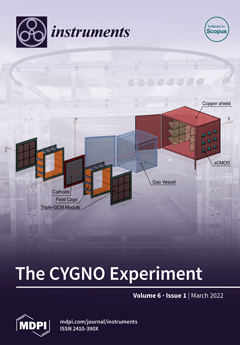Axions, hypothetical particles theorised to solve the strong CP problem, are presently being considered as strong candidates for cold dark matter constituents. The signal power of resonant-based axion detectors, known as haloscopes, is directly proportional to their quality factor
Q. In this
[...] Read more.
Axions, hypothetical particles theorised to solve the strong CP problem, are presently being considered as strong candidates for cold dark matter constituents. The signal power of resonant-based axion detectors, known as haloscopes, is directly proportional to their quality factor
Q. In this paper, the impact of the use of superconductors on the performances of haloscopes is studied by evaluating the obtainable
Q. In particular, the surface resistance
of NbTi, Nb
Sn, YBa
Cu
O
, and FeSe
Te
is computed in the frequency, magnetic field, and temperature ranges of interest, starting from the measured vortex motion complex resistivity and the screening lengths of these materials. From
, the quality factor
Q of a cylindrical haloscope with copper conical bases and a superconductive lateral wall, operating with the TM
mode, is evaluated and used to perform a comparison of the performances of the different materials. Both YBa
Cu
O
and FeSe
Te
are shown to improve the measurement sensitivity by almost an order of magnitude, with respect to a whole Cu cavity, while NbTi is shown to be suitable only at lower frequencies (<10 GHz). Nb
Sn can provide an intermediate improvement of the whole spectrum of interest.
Full article




